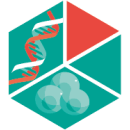Rethinking lentiviral manufacturing for cell and gene therapies: from platform design to point-of-care delivery
Cell & Gene Therapy Insights 2025; 11(7), 909–917
DOI: 10.18609/cgti.2025.101
From your perspective, what core elements define the ‘next frontier’ in lentiviral vector (LVV) design, development, and manufacturing, and how are they transforming the broader cell and gene therapy (CGT) landscape?
BD: There are a few key elements, with the first being algorithm-based LVV design. A significant amount of effort is spent with our clients at the front end, focusing on vector optimization. A two- to three-fold improvement in titer or functionality can have a substantial impact by the time a product reaches commercialization. Designing the vector with the right elements, such as optimal promoters, transgene expression levels, and construct configuration, is critical. Investing in that design stage early on offers substantial benefits later.
Many CDMOs typically take a construct that has been developed in an academic laboratory and proceed directly to manufacturing. In contrast, we take a more specialized and collaborative approach by working closely with clients to optimize the vectors before they advance into clinical development. Multiple versions of a given vector are often produced to identify the one that achieves both high titer and optimal functionality, in alignment with the client’s target product profile.
Another key element is vector targeting. Rather than relying exclusively on the standard vesicular stomatitis virus glycoprotein (VSVG) envelope, there is increasing interest in alternative pseudotypes that support targeted delivery. For example, envelopes such as cocal, show promise in both ex vivo and in vivo applications when combined with targeting motifs. These approaches may enable more selective transduction of specific cell types, including vectors tailored for T-cell and stem cell transduction, which may support more precise targeting strategies.
Together with advances in scalable and streamlined manufacturing, these innovations are helping to reduce costs, improve product quality, and support broader access. As gene therapy continues to mature, these technical refinements are shaping the next wave of LVV development.
Looking now at specialized CDMOs, what operational shifts have occurred, and what still needs to happen for CDMOs to move from industrialization to operationalization? What role does Vector BioMed play in that transformation?
MK: In recent years, some CDMOs have approached CGTs as an extension of their existing service portfolios, generally built around monoclonal antibodies and therapeutic proteins. The assumption has often been that manufacturing processes, CGMP facilities and conventional quality systems used in biologics production would translate directly to CGT manufacturing. However, experience has shown that CGT manufacturing demands a more specialized and responsive approach informed by product specific experience.
This has led to several large, well-resourced CDMOs struggling to consistently deliver high-quality products in this space. It has highlighted the limitations of applying a traditional industrial model, one focused on automation, centralization, and scale, to a field that often requires flexibility, customization, and rapid iteration.
For CGT manufacturing to be operationalized effectively, CDMOs must focus on reducing concepts to practice. This means demonstrating proof of concept early, confirming manufacturability, and moving efficiently from vector design to clinical-grade production. Speed and adaptability are essential, particularly in the early stages when developers need to refine and test their constructs iteratively.
Vector BioMed emphasizes this type of early partnership model, working closely with clients to generate functional material rapidly, enabling clinical translation and positioning programs for long-term success. Supporting this kind of development pathway will be critical to expanding the impact of CGTs and accelerating their path to commercialization.
The CGT industry continues to struggle with affordability and accessibility. What specific bottlenecks do therapeutic developers face along the development pathway and in vector manufacturing, and what must be addressed to close this gap?
MK: A particularly persistent bottleneck is the continued reliance on legacy practices that are not phase-appropriate for early-stage development. While regulatory frameworks increasingly emphasize data-driven, risk-based decision-making, operational approaches have not always kept pace with this mindset.
For example, let’s look at the production of plasmids for LVVs. Historically, the industry followed a paradigm developed over 20 years ago, where developers would invest months and hundreds of thousands of dollars into master bacterial cell banks and large-scale plasmid manufacturing, steps more appropriate for a final therapeutic product than for enabling early clinical development. These legacy practices add substantial cost and time without necessarily improving safety or efficacy.
To close this gap, these outdated assumptions must be challenged, and a more flexible, risk-based approach that aligns with the current regulatory climate should be adopted. Encouragingly, more vendors are beginning to support these streamlined pathways. However, broader adoption across the manufacturing ecosystem is still needed.
BD: Another key bottleneck lies in the lack of true platform processes for LVV production. Many existing manufacturing methods are outdated and require extensive customization, which balloons both cost and timelines.
Developing modular, platform-based solutions that can be applied across a variety of constructs is essential. These approaches reduce the need for revalidation and can significantly accelerate development while improving affordability. By leveraging accumulated process data and minimizing unnecessary redundancies, the gap between innovation and patient access can be closed.
How is the service model different between supporting point-of-care (PoC) versus centralized manufacturing? What levers should CDMOs be pulling on to gain speed-to-patient while maintaining quality and scalability?
BD: Many of the currently approved autologous therapies, particularly in the CAR T-cell and stem cell therapy spaces, have demonstrated strong clinical efficacy. In these cases, PoC manufacturing may offer distinct advantages over centralized models.
Centralized manufacturing is well-suited to traditional pharmaceuticals that benefit from economies of scale, such as monoclonal antibodies. However, in autologous cell therapy, where the starting material is a patient’s cells and the final product must be returned to that same individual, the centralized model introduces logistical and cost-related inefficiencies. PoC manufacturing, which takes place either onsite or near the treatment center, can streamline this process by reducing transportation time, simplifying coordination, and improving turnaround [1]1.Dropulić B. CAR-T and cellular gene therapies are too expensive. Nat Med. 2024; 30(10), 2714. .
One of the major benefits of this approach is the potential to shorten vein-to-vein time. In some current systems, patients may wait 5–6 weeks to receive treatment, a timeline that is not viable for those with rapidly progressing diseases. PoC models could enable more timely delivery, with manufacturing occurring over the course of days, or potentially even within a single day in the future.
In addition to time savings, distributed production models may help alleviate some of the reimbursement and logistical hurdles that arise when therapies must cross regional or state boundaries. Smaller, regionally focused manufacturing sites can serve nearby hospitals more efficiently, and the infrastructure required is typically less complex than that of large, centralized facilities.
The long-term success of this model will depend on coordination across a broad ecosystem, including manufacturing partners, clinical centers, hospitals, and regulatory bodies. Reducing production costs and shortening the time to treatment with autologous cell therapy products will be key to supporting their broader access.
MK: To support these kinds of distributed models, simplifying cell processing workflows is also important. Many existing autologous manufacturing procedures rely on automated systems that are costly and technically demanding. There are ongoing efforts across the field to develop approaches that are more straightforward, resource-efficient, and suitable for use in a range of clinical settings.
Skepticism around the viability of PoC models often centers on concerns surrounding technical readiness. However, there is precedent in clinical practice. For example, global data from 2018 shows that more than 1,800 teams across nearly 90 countries performed approximately 100,000 bone marrow transplants [2]2.Atsuta Y, Baldomero H, Neumann D, et al. Continuous and differential improvement in worldwide access to hematopoietic cell transplantation: activity has doubled in a decade with a notable increase in unrelated and non-identical related donors. Haematological 2024; 109, 3282–3294.. These are complex procedures that require stringent quality standards and multidisciplinary expertise.
If institutions already have the capacity to carry out bone marrow transplants, it stands to reason that with the right tools and training, they could support the manufacturing of autologous cell therapies. Building on this existing infrastructure, and adapting processes to be more accessible and streamlined, may help bring advanced therapies closer to the patient in a safe and scalable way.
You emphasized the importance of commercial-friendly solutions. How do customized vector solutions and standardized, off-the-shelf platforms balance innovation with global regulatory considerations and affordability?
BD: Balancing innovation with commercial viability requires thoughtful design at every stage of development. From a vector manufacturing perspective, one of the key considerations is to ensure that solutions are economical and scalable across development phases. Custom vector solutions can be commercial-friendly when they are designed to be cost-effective at small scale while remaining compatible with full-scale clinical and commercial production.
It is also important that these systems allow for early optimization. By refining the vector at the outset, through improved titer and/or functionality, this supports a more efficient downstream process, enhancing the chances of success in the clinic and beyond.
Alongside tailored solutions, there is a growing role for standardized off-the-shelf vectors, particularly in spaces such as CAR T-cell therapy, where certain constructs, including some CARs, are now off-patent. For organizations that lack the infrastructure or resources to develop their own constructs, off-the-shelf options (or rapid CAR-T formats) can lower barriers to entry. These solutions can support both autologous and stem cell-based approaches, and when paired with compatible cell processing methods, can streamline translation.
From a regulatory standpoint, harmonization is paramount. Custom and off-the-shelf platforms alike must be developed with global compliance in mind, particularly as sponsors look to expand across multiple jurisdictions. That said, complexity does not always equate to reliability. In fact, highly automated systems can introduce long-term cost burdens due to proprietary materials and platform lock-in. By prioritizing simplicity and resilience, while preserving the option to automate later, developers can retain flexibility, reduce upfront costs, and focus on validating their therapeutic approach.
This balance between flexibility, cost-efficiency, and regulatory alignment is vital to ensure more equitable access to advanced therapies.
In the next 18–24 months, what are the most critical inflection points or opportunities you anticipate in CGT manufacturing, and what risks do we face if this operational and strategic shift doesn’t happen?
MK: From my perspective, one of the most important inflection points is the need to significantly improve affordability and broaden access to CGTs. We are already seeing major industry players stepping back from their advanced therapy portfolios, partly because the field has not yet shown scalable, economically sustainable models.
The traditional high-cost, low-volume model is not viable in the long term. Instead, we need to reduce costs and expand access, enabling the treatment of more patients at lower margins. That shift could support both public health goals and long-term commercial sustainability. If we fail to make that adjustment, if the industry cannot show that it can deliver therapies at scale and at a reasonable cost, we risk a continued decline in investment and a contraction of opportunity across the sector.
BD: Additionally, this is exactly why we have focused so heavily on optimizing every unit operation, from upstream to downstream, to increase efficiency and reduce costs. If these therapies remain unaffordable or cannot be reimbursed, investment in the space will continue to decline.
The core challenge is that existing processes are often too expensive and too slow, creating major barriers to clinical entry and commercial success. Unless the field addresses these bottlenecks, many promising therapies may never reach patients. Tackling this issue ensures that innovation can continue and that CGTs deliver their full potential.
References
1. Dropulić B. CAR-T and cellular gene therapies are too expensive. Nat Med. 2024; 30(10), 2714. Crossref
2. Atsuta Y, Baldomero H, Neumann D, et al. Continuous and differential improvement in worldwide access to hematopoietic cell transplantation: activity has doubled in a decade with a notable increase in unrelated and non-identical related donors. Haematological 2024; 109, 3282–3294. Crossref
Biographies
Mike Kadan received his PhD in Biology from the Johns Hopkins University and later obtained an MBA from Frostburg State University, Frostburg, MD, USA. He began his biotech industry career in 1989 with one of the founding companies in gene therapy, Genetic Therapy Inc. As Chief Operating Officer, Mike brings over 30 years of experience in the development and manufacturing of biologics. He has acquired an in-depth understanding of the CMC related issues important for biologics product development and has contributed to numerous IND’s, enabling the clinical evaluation of products ranging from retrovirus, adenovirus, monoclonal antibodies, and lentiviral vectors. During his career, Mike has held leadership roles responsible for a wide range of functions, including process development, manufacturing, CMO management, materials management, inventory control, warehouse operations, and logistics. In addition, Mike has participated in several capital projects for manufacturing facility design, build and commissioning. Mike’s recent experience includes five years specializing in lentiviral vector scale up and manufacturing technology. As Director of Manufacturing at Lentigen Technology Inc. (a Miltenyi company) he led the implementation of a state-of-the-art platform process for lentivirus production and oversaw the successful completion of hundreds of GMP batches of lentiviral vector destined for human clinical trials.
Boro Dropulić received his PhD from the University of Western Australia, Crawley, Australia and his MBA from the Johns Hopkins University (JHU), Baltimore, MD, USA. He has been in the gene therapy field since the late 1980s. As Chief Executive Officer, Boro brings over 30 years of leadership and experience in the design, development, manufacturing, clinical translation, regulatory, clinical implementation, and commercialization of lentiviral vector technology. After a Fogarty Fellowship at the NIH, he joined the faculty at JHU where he worked on developing lentiviral vectors as delivery systems for gene therapy. After 4 years in academia, he founded his first company ViRxSys and led the team that first demonstrated the safety of lentiviral vectors in humans with his UPenn colleagues. Later he founded Lentigen, which first developed the Lentiviral vector used to produce Kymriah®, the first FDA-approved gene therapy product. He implemented and directed the company’s CDMO business model and therapeutic pipeline of gene therapy products. He led Lentigen until 2021, and then left to co-found and launch Caring Cross, a 501 (c)(3) non-profit, and serves as the Executive Director. Lentiviral vectors are critical to produce many gene therapy products such as CAR-T cells and gene-modified hematopoietic stem cells (HSCs) for the treatment of an increasing number of important diseases. Presently there are huge bottlenecks in obtaining high quality lentiviral vectors in a reasonable time that motivates investigators and investors alike. This delays and puts at risk the development and commercialization of innovative and potentially curative gene therapies that are desperately needed. Seeing a need to help investigators improve and accelerate their medicinal concepts needing lentiviral vectors into the clinic, Vector BioMed was launched and Boro serves as the Chief Executive Officer.
Affiliations
Mike Kadan PhD MBA, Chief Operating Officer, Vector BioMed, Gaithersburg, MD, USA
Boro Dropulić PhD MBA, Chief Executive Officer, Vector BioMed, Gaithersburg, MD, USA
Authorship & Conflict of Interest
Contributions: The named authors take responsibility for the integrity of the work as a whole, and have given their approval for this version to be published.
Acknowledgements: None.
Disclosure and potential conflicts of interest: The authors have no conflicts of interest.
Funding declaration: Support for this manuscript was specifically internal to Vector BioMed, which is a public benefit corporation CDMO that was spun out of Caring Cross, a non-profit organization.
Article & Copyright Information
Copyright: Published by Cell & Gene Therapy Insights under Creative Commons License Deed CC BY NC ND 4.0 which allows anyone to copy, distribute, and transmit the article provided it is properly attributed in the manner specified below. No commercial use without permission.
Attribution: Copyright © 2025 Vector BioMed. Published by Cell & Gene Therapy Insights under Creative Commons License Deed CC BY NC ND 4.0.
Article source: Invited.
Interview conducted: Jul 3, 2025.
Revised manuscript received: Aug 13, 2025.
Publication date: Aug 19, 2025.



.png)